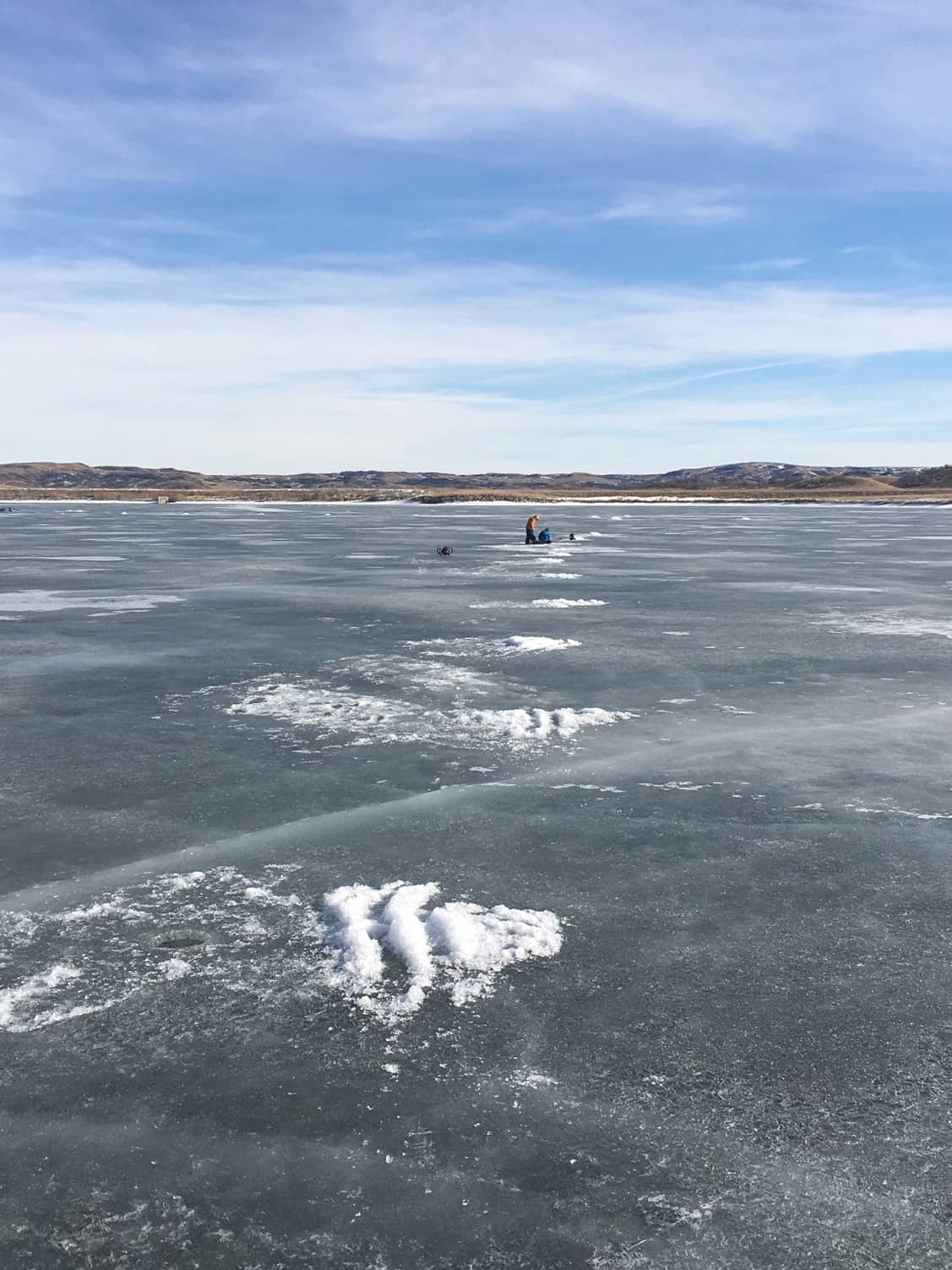
Clearing the Way. When snow melts off the ice and late season opportunities present themselves, a few good tips help with hole hopping. Simonson Photo
By Nick Simonson
As late ice sets up and warmer days on the hardwater come with it, it is easier to run around outside of the ice shack and explore those transition areas where fish are making their end-of-season moves and getting more aggressive. Hopping from hole-to-hole helps cover these stretches and find fish that are more willing to bite, but there are some tips to make the experience even better and ultimately, more successful.
Back to the Wind
First, playing the wind is often important in the late stretch of winter, as springlike shifts often bring gusts from the south one day, and switch strongly to the north the next day as the Jetstream begins to yaw, and powerful gales can be the norm during the seasonal transition. When hopping, it’s always best to kneel down beside the ice hole and turn your back to the wind, preventing gusts from blowing the line around. This helps make those subtle bites more detectible and allows for better tracking of any jumps in the monofilament or superline you’re using.
Cast Some Shade
As it relates to body positioning, on those sunny days casting your shadow over the hole and your sonar of choice helps make a digital readout show up more clearly. The glare of the sunlight overhead is cut significantly in the shade and the blips of your bait and an incoming fish can be easily detected. If a sunshield isn’t available, and you don’t want to be cupping your hand over the screen to make things out, consider where your shadow lands to help make things more visible, and just hope that it coincides with the natural windblock discussed earlier!
Double Up
Having a second rod at the ready can help you target the varied moods of fish at late ice as you run-and-gun between holes. An active, aggressive lure such as a spoon with rattles, attractors and a minnow head can serve as a starting offering to bring fish in for a look. If they decide to leave, or you suspect the fish below are perch and not walleyes, simply switch over to a rod rigged with something a bit smaller, more subtle and snackable, like a jig tipped with waxworms or spikes. Utilizing tungsten models will help get the offering down faster and keep the action going. Stash a rod in a sonar-based rod holder to keep it out of the way.
Clean It Out
Finally, on those early spring days where much of the surface snow has melted away on the cloudy late ice, it makes it easier to keep holes clean and prevent line from catching on a slush cone that may freeze after the hole has been punched. Simply swat away the snow cone with a boot, dipper or shovel to keep things clean and skim out any ice that fell into the hole. This will prevent any line hang-ups around the hole and aid in the landing of those bigger late-season fish that will find their way up to the frozen surface.
Keep these tips in mind as late season opportunities present themselves with the oncoming melt on the ice. Adjust positioning for seasonal gales, keep screens visible by using your shadow, pack an extra offering to switch to quickly for best success and keep holes clean from unnecessary slush for easier landings. By putting these tips and others you learn along the way as you hop from hole to hole, late winter and early spring ice fishing can be some of the best of the season.
